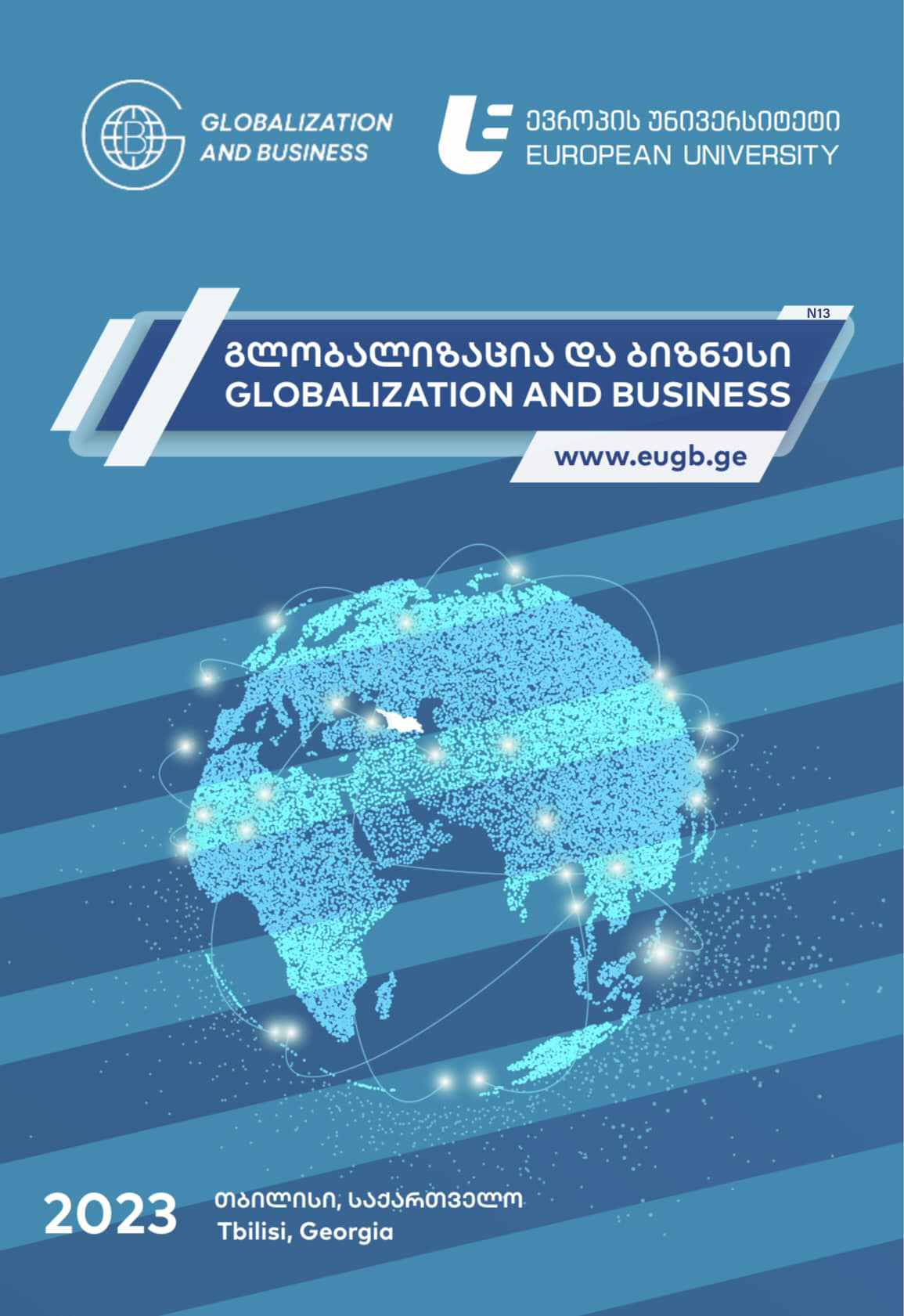DEMOGRAPHIC AGING PROCESS AND ITS INFLUENCE ON THE LABOR STRUCTURE OF THE POPULATION
DOI:
https://doi.org/10.35945/gb.2022.13.014Keywords:
Demographic Aging, Birth Rates, Migration, Potential Support RateAbstract
Development of the demographic aging is one of the characteristics out of many challenges of the modern world population. Demographic aging is demonstrated in an increased number of the older population and is a sign of the aging structure evolution.
The results of demographic aging are obvious in many countries of the world, including Georgia. The outcomes are reflected in various fields, like family structure, savings, economic development, change of consumption forms, the balance of demand and supply at the labor market, healthcare, and social protection services. An increased number of elderly people will raise the costs of retirement allowance and care and will be a kind of test for the country economy (Bruni …2017, 20)
Despite the trend of increasing proportion of the elderly population in the world, demographic aging is characterized by significant variety. The paper reads the demographic indicators (evaluations and predictions), describes period between 1990-2050. The portion of the population above 65 in entire world of the period was increased from 6.2% to 9.3%. According to the UN scale the world is aged, though least developed countries still maintain demographic youth, though according to forecast, the mentioned counties will be aged from 2030.
Based on estimation of the correlation between demographic aging coefficient and factors influencing it there are the following findings, in particular, correlation between demographic aging and birth general coefficient (-0,876) for entire world, as well as total birth coefficient (-0,812) is strong. The linkage between less developed regions is the same, while there is average linkage in the developed regions. As for relationship with migration, it is average in developed regions, while it is weak in less developed regions and countries. The most important correlation was identified between the demographic aging and median age reaching almost full relationship (0,973-0,981). It shows that change of median age is the key indicator influencing demographic aging.
Demographic changes has been started by reduction of the birth rate since 19th century in Georgia, while portion of the elderly population exceeded 8% since 20s of the twentieth century. The paper refers the data from the public census for description of the demographic aging stages in Georgia according to the age groups (1897-2002); the factors influencing demographic aging are also learnt. The aging index within Georgian population corresponds to the index of the developed regions; this is why the influencing factors on the aging (birth, median age, life-span) mainly look similar to developed regions’ tendencies. It was reflected and will be reflected in aging and the rate forecasted by the UN for 2050 is around 21.8. As for migration, considered as one of the influencing factors on aging, it has a negative impact, characterized for less developed countries. According to the UN forecast migration coefficient for 2020 was 2.5, actually it reached 4.2, which can be the result of COVID-19 pandemic.
As for the demographic aging linkage with the influencing factors in Georgia, the correlation of birth indicator is medium (general birth rate is 0.395, total birth rate is 0.612), while the strong linkage was identified between the migration and median age (median age was 0,935; migration was 0,988).
The changes derived from demographic aging are reflected in the age structure of the work-capable population, reduction of labor supply. The paper provides three age groups of the labor-capable population (1994-2020), where there is the reduction by 42% of 15-29 age group compared to baseline period. This is the most serious result of the demographic aging.
Reduction of the youth share among the work-capable population can have significant losses in terms of innovation, as well as less adaptation to the technological development. It was more obvious during the COVID 19 pandemics. The pandemics highlighted unequal access of the population to the digital technologies. Elderly people are more digitally-isolated and have barriers in accessing commodities and services which are provided online more and more (Ageing in the Digital Era, 2021). The same problem is faced by the population of pre-retirement period as during working processes appliance of digital technologies has been increased in the services. It is estimated that when younger part of the work-capable population be in the young adulthood age, the access to the modern requirements and media literacy will be increased, it will reduce the risk estimated by many scientists on slowing economic development down due to demographic condition during the next few decades. The economy is able to adjust to the changes of the population age structure due to new technologies.
Downloads
Downloads
Published
Issue
Section
License
Copyright (c) 2022 Globalization and Business

This work is licensed under a Creative Commons Attribution-NonCommercial-ShareAlike 4.0 International License.









